
The Rise of Superman: Decoding the Science of Ultimate Human Performance
by
Steven Kotler
Published 4 Mar 2014
Thus toying with flow involves tinkering with primal biology: addictive neurochemistry, potent psychology, and hardwired evolutionary behaviors. Seriously, what could go wrong? And that’s part of the problem—even when everything goes right, things go wrong. Walking this path demands constantly increasing the challenges we face. We are climbing a ladder of escalating risk—with this ladder being the first of the dangers encountered on the flow path. Continuously pushing on the challenge/skill ratio means it’s scary here, and it’s going to get scarier. Sooner or later, if we stay on this path long enough, pushing past one’s comfort zone is going to require exceeding traditional margins for safety.
…
And when listless and undermotivated, bliss junkies often turn to drugs, alcohol, gambling, sex, and other high-risk behaviors to mask the pain of flow’s loss or to hasten its return. And these issues are only part of this picture. In this accounting of flow’s dark side, the categories we’ve so far examined—the escalating ladder of risk, the dark night of the flow, and the meaning miscalculations of the bliss junky—are all personal and psychological, but there are also cultural issues to consider, namely, the questions of whether flow can be corrupted or controlled. Neither question is easy to answer. Corruption is problematic because flow increases empathy and social bonding, but that doesn’t mean pickup artists or pickpockets can’t co-opt the state to further their craft.
…
Whether this is a good thing or a bad thing depends on one’s trust in government and feelings for nation-states, but it doesn’t take much to imagine how this experiment could go wrong. On a slightly different scale, society likes to pay for performance and flow definitely improves performance. In action and adventure sports, for example, flow’s escalating ladder of risk—once cause for marginalization—now supports an entire industry. And these supporters want footage. Thus athletes on a heli-ski film shoot (who used their ability to get into flow to get that job) can’t back away from a run just because they’re not feeling the flow—not if they want to continue to have a career.
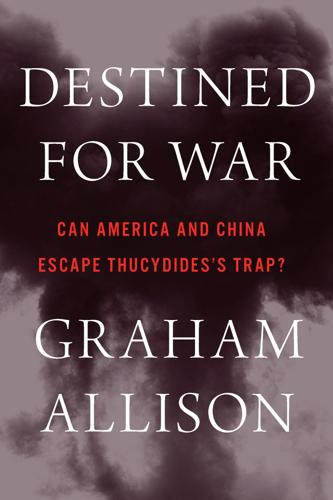
Destined for War: America, China, and Thucydides's Trap
by
Graham Allison
Published 29 May 2017
Together, these four cases suggest that when considering when and how China may use military force, it is not sufficient to ask what we would do in its shoes. For Chinese leaders, military force is an instrument in an orchestra of engagement, one they may use preemptively to surprise a stronger opponent who would not have done likewise. SPARKS, BACKGROUND CONDITIONS, ACCELERANTS, AND ESCALATION LADDERS In war scenarios, analysts use basic concepts familiar from the US Forest Service. Arsonists cause only a small fraction of fires. Discarded cigarettes, smoldering campfires, industrial accidents, and bolts of lightning are much more common sources. Fortunately, in the forest as well as in relations among nations, most sparks do not ignite a blaze.
…
While American cyber commanders repeatedly affirm that in cyber offense, the US has the biggest rocks, they also acknowledge that the US lives in the glassiest house. In the 1960s, futurist Herman Kahn (one of the Cold War strategists parodied by Peter Sellers’s movie character Dr. Strangelove) proposed a 44-rung escalation ladder from “subcrisis maneuvering” up to full-scale nuclear war.27 Kahn’s first rung was the “ostensible crisis”—the spark. He explained that in a crisis, two powers would rarely proceed methodically and incrementally up the ladder. Background conditions and accelerants could cause them to skip rungs.
…
Unbeknown to Washington, an anxious Beijing determined to restrain North Korea could send its special forces into the area—where they might be killed in the US attack on the artillery. Beijing would see the US attack on its forces as deliberate and retaliate. Unaware that they have killed Chinese troops, US commanders would respond, moving up the escalation ladder. North Korea’s increasingly sophisticated intermediate-range missiles serve as the driver for a second sequence. As North Korea descends into chaos following Kim’s death, Americans do their best to destroy weapon systems capable of delivering a nuclear warhead against South Korea, Japan, or the US territory of Guam.

If Anyone Builds It, Everyone Dies: Why Superhuman AI Would Kill Us All
by
Eliezer Yudkowsky
and
Nate Soares
Published 15 Sep 2025
That incentive problem would be easier to manage if scientists could run some calculations and agree: “The deadly rung is the fourth one,” or “The threshold is exactly 257,000 GPUs; so long as nobody connects that many GPUs together, we’ll all be safe.” But nobody can do that sort of calculation about AI. Are we sure that the next rung in the AI escalation ladder is the last fatal step, and not a rung that brings fame and riches to whoever takes it first? No, we are not sure at all. Maybe someone climbs one more rung, and is rewarded. And then humanity would be back in the same position. After that, someone climbs another rung and we all die—if the AI executives are right that humanity is only a few years from the breakpoint.
…
We’d prefer there be an international treaty and coalition around not building it.” The goal is not to have your country unilaterally cease AI research and fall behind. It is to have enough major powers express willingness to halt the suicide race, worldwide, that your home country will not be placed at a disadvantage if you agree to stop climbing the AI escalation ladder. We have already mentioned that Rishi Sunak acknowledged the existence of risks from artificial superintelligence in October 2023, while he was the prime minister of the United Kingdom. Also in October 2023, Chinese General Secretary Xi Jinping gave (what seems to us like) weak signals in that direction, in a short document on international governance that included a call to “ensure that AI always remains under human control.”

The Age of AI: And Our Human Future
by
Henry A Kissinger
,
Eric Schmidt
and
Daniel Huttenlocher
Published 2 Nov 2021
Still other cyber actions have the capacity to inflict physical impacts akin to those suffered during traditional hostilities. Uncertainty over the nature, scope, or attribution of a cyber action may render seemingly basic factors a matter of debate—such as whether a conflict has begun, with whom or what the conflict engages, and how far up the escalation ladder the conflict between the parties may be. In that sense, major countries are engaged in a kind of cyber conflict now, though one without a readily definable nature or scope.8 A central paradox of our digital age is that the greater a society’s digital capacity, the more vulnerable it becomes.
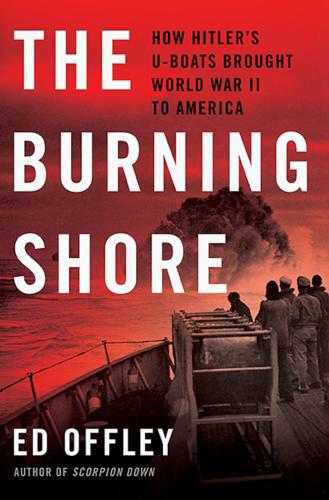
The Burning Shore: How Hitler's U-Boats Brought World War II to America
by
Ed Offley
Published 25 Mar 2014
While Navy Secretary Frank Knox called the attack “worse than piracy,” President Roosevelt told a press conference that the incident had not materially changed the United States’ position of neutrality. Having already denounced the U-boat Force as a gang of pirates and issued shoot-on-sight orders to the Atlantic Fleet, Roosevelt avoided the next logical step on the escalation ladder: a formal declaration of war. But out on the mid-ocean shipping routes, the sailors knew better. Formalities aside, the US Navy was now fully engaged as a combatant in the Battle of the Atlantic.6 UNTIL THE VERY END OF 1941, the United States and Germany had managed to avoid declaring outright war against each other—an eventuality that both governments wanted to avoid if possible.
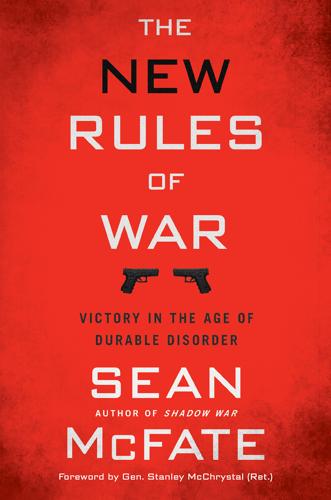
The New Rules of War: Victory in the Age of Durable Disorder
by
Sean McFate
Published 22 Jan 2019
During the Cold War, the United States and the USSR stockpiled vast amounts of nuclear weapons, mainly for defensive purposes. If America had one thousand warheads, the USSR wanted two thousand. The United States reciprocated with another three thousand, and then the USSR built an additional five thousand. Neither country felt secure unless it had more nukes. Ultimately this escalation laddered up to mega-arsenals, and one miscommunication could have blown up the world. In fact, it nearly happened at least six times during the Cold War.22 Private warfare also creates a security dilemma. In such a dangerous environment, buyers retain mercenaries for purely defensive purposes, but this can backfire.
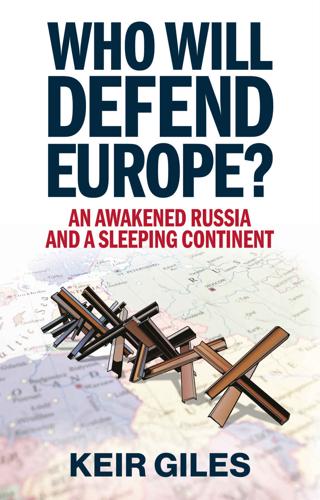
Who Will Defend Europe?: An Awakened Russia and a Sleeping Continent
by
Keir Giles
Published 24 Oct 2024
That covers everything necessary for sustained warfighting, from food supplies to machinery.45 The country has stockpiles of at least six months’ consumption of major fuels and grains, emergency reserves of medicines and medical supplies, and has also begun storing military equipment, ammunition and spare parts on the territory of neighbours and fellow NATO members Norway and Sweden as well as further afield, keeping them in ready reserve but also at a greater distance from their only real threat. According to Lt-Gen Mikko Heiskanen, deputy chief of staff for armaments and logistics in the Finnish Defence Forces and effectively head of Finland’s war economy, the country has not yet moved to a war footing. In May 2024, Heiskanen said that Finland was at step three out of nine on its escalation ladder. For instance, although it had significantly increased production of ammunition after 2022 – now making five times the shells it did just five years ago and still increasing – it was still not working factories 24 hours a day. Importantly, the emphasis in both military and civil preparedness is on ensuring the country is prepared to weather a potential long-term crisis, rather than a temporary emergency.46 And Finland has demonstrated its readiness to take drastic steps to protect itself, accepting that this will cause economic disruption and inconvenience to its citizens.
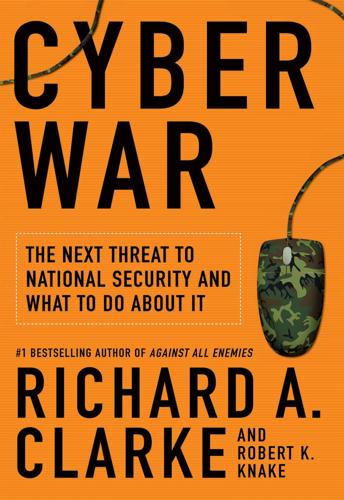
Cyber War: The Next Threat to National Security and What to Do About It
by
Richard A. Clarke
and
Robert Knake
Published 15 Dec 2010
International lawyers will quibble about the “not be limited” line, noting that defensive responses are supposed by international law conventions to be commensurate with the attack. Suggesting the response might be incommensurate, however, adds to deterrence. In nuclear strategy this idea was called “escalation dominance”—responding to a lower-level attack by moving rapidly up the escalation ladder and then saying that the hostilities must end. It sends the message that you are not willing to engage in some prolonged, slow-bleeding conflict. It is an option that the President must have, whether or not he uses it. What if, as is likely, the attribution problem occurs and the attacker hides behind the skirts of “citizen hacktivists” or claims the attack merely transited their country, but did not originate there?
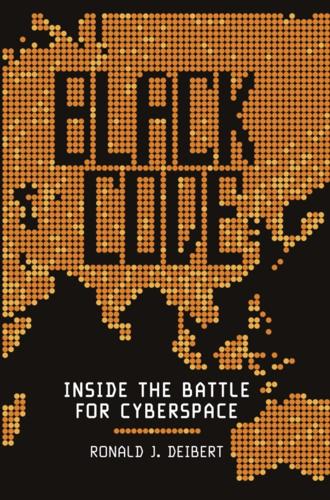
Black Code: Inside the Battle for Cyberspace
by
Ronald J. Deibert
Published 13 May 2013
As the Stuxnet worm aptly demonstrated in 2010, a menacing virus or trojan horse can be used to sabotage critical infrastructure. Such an attack would invariably provoke a wider response from the U.S., which now defines a cyber attack as an act of war. As security strategist Herman Kahn noted about the Cold War, this can be described as an “escalation ladder,” one step leading to another, further and further into an armed imbroglio that neither side fully controls or desires. Part of China’s international strategy revolves around the setting of technical standards, like those relating to wif protocols. In the early 2000S, after China lobbied unsuccessfully to have its WAPI standard for wireless networking adopted internationally, its government turned to promoting WAPI (WLAN Authentication and Privacy Infrastructure) as the domestic standard instead, making many handsets less than fully functional.

Green Mars
by
Kim Stanley Robinson
Published 23 Oct 1993
Or that it hadn’t been the contest of two great global alliances, but was much more confused and complex: different sources would claim it was north against south, or young against old, or UN against nations, or nations against transnationals, or transnationals against flags of convenience, or armies against police, or police against citizens— so that it began to seem every kind of conflict at once. For a matter of six or eight months the world had descended into chaos. In the course of his wanderings through “political science” Sax had stumbled across a pseudoscientific chart by a Herman Kahn, called an “Escalation Ladder,” which attempted to categorize conflicts according to their nature and severity. There were forty-four steps in Kahn’s ladder, going from the first, Ostensible Crisis, up gradually through categories like Political and Diplomatic Gestures, Solemn and Formal Declarations, and Significant Mobilization, then more steeply through steps like Show of Force, Harassing Acts of Violence, Dramatic Military Confrontations, Large Conventional War, and then off into the unexplored zones of Barely Nuclear War, Exemplary Attacks Against Property, Civilian Devastation Attack, and right on up to number forty-four, Spasm or Insensate War.
…
At the same time on Earth, Subarashii’s competitors had objected to what was effectively an economic conquest of Mars, and though Praxis had confined its objections to legal action at the hapless UN, one of Subarashii’s flags of convenience, Malaysia, had been attacked by Singapore, which was a base for Shellalco. By April of 2061 much of south Asia was at war. Most of the fights were long-standing conflicts, such as Cambodia versus Vietnam, or Pakistan versus India; but some were attacks on Subarashii flags, as in Burma and Bangladesh. Events in the region had shot up the escalation ladder with deadly speed as old enmities joined the new transnat conflicts, and by June wars had spread all over Terra, and then to Mars. By October fifty million people had died, and another fifty million were to die in the aftermath, as many basic services had been interrupted or destroyed, and a newly released malaria vector remained without an effective prevention or cure.

Fuller Memorandum
by
Stross, Charles
Published 14 Jan 2010
I've gone to the Board: they authorized an escalation to Rung Three. I have accordingly put CO15 on notice to provide escort and routing." CO15 is the Traffic Operational Command Unit of the London Metropolitan Police. "MAGINOT BLUE STARS are in the loop and ready to provide covering fire if we need to go above Rung Five." The notional ladder of escalation's rungs are denominated in steps looted from Herman Kahn's infamous theory of strategic conflict: in a good old-fashioned war, Rung Five would mark the first exchange of tactical nuclear weapons. "Is it that bad?" Boris asks, needy for reassurance. Even old war horses sometimes balk in the face of a wall of pikes.
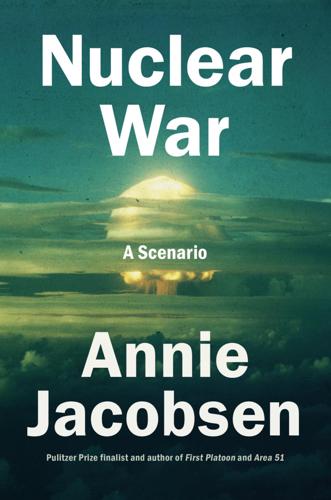
Nuclear War: A Scenario
by
Annie Jacobsen
Published 25 Mar 2024
“They are ready this minute—under the ground, under the sea, in the air—we are ready to respond to any threat, and the adversaries of the world, including Kim Jong Un, have to know that.” The elevator doors open. “If somebody launches a nuclear weapon against us, we launch one back,” says General Hyten. “They launch another, we launch another. They launch two, we launch two.” It’s an “escalation ladder,” Hyten says. The STRATCOM commander in this scenario hustles into the underground Battle Deck, a 1,000-square-foot, concrete-walled room. His eyes focus on a massive electronic screen that covers almost the entire wall. A display screen the size of a movie theater screen. Three electronic clocks display three different time sequences, being tracked in seconds, as the attacking nuclear missile hurtles toward the United States.

Ready Player One
by
Ernest Cline
Published 15 Feb 2011
The original game ROMs were all stored in the planet’s OASIS code, and their wooden game cabinets were each coded to look like the antique originals. Hundreds of shrines and exhibits devoted to various game designers and publishers were also scattered throughout the museum. The museum’s various levels were comprised of vast caverns linked by a network of subterranean streets, tunnels, staircases, elevators, escalators, ladders, slides, trapdoors, and secret passageways. It was like a massive underground multilevel labyrinth. The layout made it extremely easy to get lost, so I kept a three-dimensional holographic map on my display. My avatar’s present location was indicated by a flashing blue dot. I’d entered the museum next to an old arcade called Aladdin’s Castle, close to the surface.

Animal Spirits: The American Pursuit of Vitality From Camp Meeting to Wall Street
by
Jackson Lears
But Kahn’s more insistent rationality, coupled with his brash style, attracted media attention and made him a Cold War celebrity. In On Thermonuclear War (1960) and On Escalation (1965), Kahn claimed that both sides, out of self-interest, would produce decisions through algorithmic rules—every step up the ladder of escalation would be taken in accordance with axiomatic, formal rationality. (As in free-market ideology, self-interest became the stabilizing force that somehow automatically kept the delicate mechanism of decision-making from flying apart.) To make deterrence work, Kahn insisted, the threat of escalation had to be credible: this meant inching as close as possible to the nuclear brink.

Chokepoints: American Power in the Age of Economic Warfare
by
Edward Fishman
Published 25 Feb 2025
This time, moreover, Western governments would not have the time to ratchet up sanctions incrementally. U.S. intelligence suggested Putin was preparing a blitzkrieg and expecting his battalions to hoist the Russian flag over Kyiv within forty-eight hours of the first combat operations. “Unlike in 2014, we can’t afford to think about a gradual escalation ladder,” Singh warned his international colleagues in Rome. “We need to start at the very top.” They did, however, have the luxury of advance warning and could use it to Putin’s disadvantage. Singh invited his foreign counterparts to join the U.S. government in “very public messaging that signals our readiness to impose the most severe sanctions in our arsenal.”

Strategy: A History
by
Lawrence Freedman
Published 31 Oct 2013
The noun acquired a verb when he referred to “people who wish to escalate a little themselves, but somehow feel that the other side would not be willing to go one step further.”54 Escalation was transformed from a hopelessly unruly process to one that might be tamed and possibly manipulated. In his 1965 book On Escalation, he introduced the “escalation ladder” with sixteen thresholds and forty-four steps. For most, the striking feature of the book was the possibility of anyone coming up with almost thirty distinct ways of using nuclear weapons following their first use at rung fifteen.55 The escalation up the ladder concluded, when all semblance of control had been lost, with a “wargasm.”